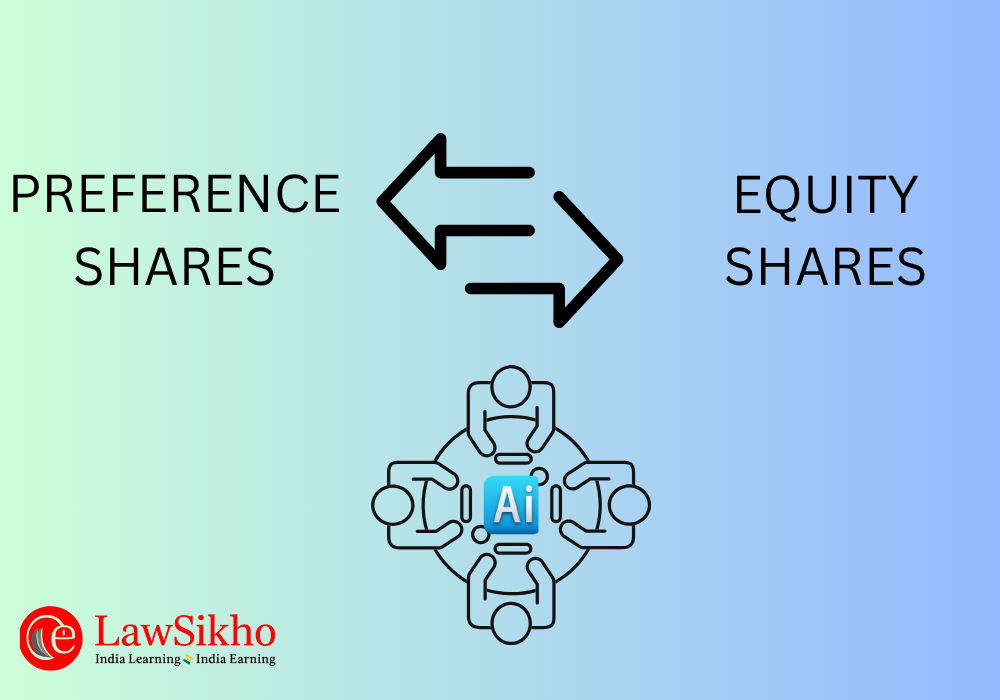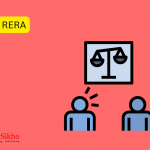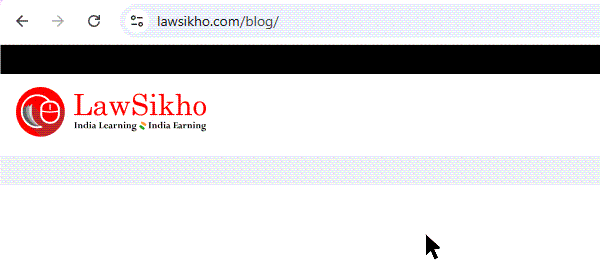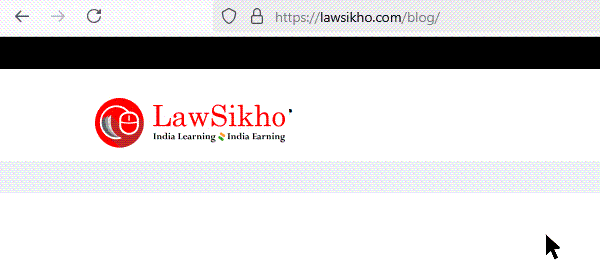Discover how to automate legal compliance, equity share issuance, and ROC filings for CCPS conversion using AI tools like ChatGPT. This step-by-step guide shows how junior lawyers can handle sections 48, 62, PAS-3, MGT-14, and RBI approvals confidently with AI-powered workflows.
Table of Contents
Recap of AI-based share conversion process
This is the second part of our guide on automating preference share conversions into equity shares using AI.
In Part 1, we watched Priya transform from a panicked junior associate into someone who could systematically tackle complex legal work using ChatGPT.
She analysed Articles of Association, extracted terms from Share Subscription Agreements, and drafted complete required documents—all while learning that AI is powerful but needs human oversight.
It is 1:15 AM on Wednesday morning.
Priya has been working for 90 minutes straight on NovaEdge Fintech’s ₹120 crore Compulsorily Convertible Preference Shares (CCPS) conversion. She has completed the foundation work, but the board of directors wants everything finalised and filed before the next weekend.
Forty-eight hours. That is all she has left.
The remaining steps are not just paperwork; they are something that could determine whether this conversion happens smoothly or turns into a regulatory nightmare.
Step 4: Section 48 and 62 compliance review with AI
Priya stretches her fingers and continues with the same ChatGPT conversation (click here to see the complete conversation).
The next challenge?
Figure out whether NovaEdge needs additional shareholder approvals under section 48 or section 62.
This is where junior lawyers usually panic.
The statutory provisions are scattered, the exceptions are nuanced, and getting it wrong can invalidate the entire conversion.
But Priya has learned something important: AI excels when you give it specific scenarios instead of asking generic legal questions.
Her fourth prompt cuts straight to the heart of the matter.
Fourth prompt:
I need a compliance analysis for NovaEdge Fintech’s CCPS conversion scenario. Based on our previous analysis:
Context:
– Converting ₹120 crores Series A CCPS to equity shares
– Conversion triggers already met (voluntary conversion available)
– Original SSA includes conversion terms from 2022
– Current AoA may need amendment for explicit conversion provisions
– Post-conversion equity holding might exceed 9.99% (requiring RBI approval)
Please analyse:
1. Does this conversion require shareholder approval under section 62(1)(c)?
2. Do we need section 48 compliance for variation of class rights?
3. What’s the difference between voluntary vs. mandatory conversion compliance?
4. Timeline implications for each compliance route
5. Draft a compliance roadmap with critical deadlines
Focus on practical compliance steps, not theoretical legal commentary.
ChatGPT’s response arrives within seconds (click here to see). And it is exactly what Priya needed.
The section 62(1)(c) question:
ChatGPT delivers a definitive “No”, stated the original CCPS issue in 2022 was approved by special resolution under section 62(1)(c) and Rule 9(3), and conversion terms were clearly disclosed in the SSA, offer letter (PAS-4), and special resolution. Since conversion now only gives effect to pre-agreed terms, fresh shareholder approval under section 62(1)(c) is not required.
Section 48 analysis:
ChatGPT concludes “Only if” the conversion modifies rights of preference shareholders in a way not originally specified. Since the CCPS were compulsorily convertible and conversion happens as per the original terms with no fresh variation of class rights, “Section 48 is not triggered.”
Voluntary vs. Mandatory Conversion:
ChatGPT creates a detailed comparison table showing key differences. Voluntary conversion offers flexible timing with investor discretion and controlled board planning. Mandatory conversion requires automatic action upon trigger events like IPO filing, RBI non-viability determination, or CET1 ratio falling below 7%.
The 10-Step Compliance Roadmap:
ChatGPT provides a comprehensive timeline:
- AoA Review (Day 0)
- Board Meeting (Day 3–5)
- Call EGM (21 clear days before EGM)
- EGM Held (Day 30 est.)
- File MGT-14 (Within 30 days of EGM)
- RBI Approval if >9.99% (Before conversion date)
- Board Noting of Conversion (Same day as conversion)
- File PAS-3 (Within 30 days of conversion)
- Update Registers (Within 7–15 days of allotment)
- Intimate Investor (Post-conversion)
Risk Identification:
ChatGPT flags specific penalties—”₹100/day MCA penalty” for late filing of PAS-3, potential ROC objections for missing AoA amendments, and “Non-compliance with FEMA and SFB licensing terms” if post-conversion holding exceeds 9.99% without RBI approval.
Priya prints the roadmap. This is not just legal advice; it is an execution plan with specific deadlines and responsible parties.
Step 5: AI-generated execution plan for share conversion
1:45 AM. Priya is feeling confident now.
The compliance analysis gave her the framework, but she needs something more granular—a step-by-step operational plan for actually issuing the equity shares once the conversion is approved.
She has seen enough transactions derail because someone forgot to update the right register or missed a statutory deadline. Not happening on her watch.
Her fifth prompt is all about execution:
Create a comprehensive equity share issuance plan for NovaEdge’s CCPS conversion:
Transaction details:
– ₹120 crores CCPS converting to equity at 1:1 ratio
– Voluntary conversion under existing SSA terms
– Potential RBI approval required
– 60-day share certificate issuance deadline
Please provide:
1. Step-by-step issuance checklist with responsible parties
2. Critical timeline with Companies Act deadlines
3. Register update requirements (Register of Members, CCPS register)
4. Share certificate procedures and signing requirements
5. Compliance verification checklist
6. Risk mitigation for common delay points
Format as actionable checklists, not narrative explanations.
ChatGPT creates a comprehensive execution plan. Click here to see it.
The 13-Step execution checklist
ChatGPT provides a comprehensive checklist starting with “Verify SSA conversion terms” and ending with “Share updated cap table with the investor.” Each step includes responsible parties—Legal, CS (Company Secretary), Board, Shareholders, and Compliance teams.
Critical timeline with companies act deadlines: ChatGPT maps exact statutory requirements:
- EGM notice: 21 clear days before EGM (section 101)
- File MGT-14 for AoA amendment: Within 30 days of EGM (section 117)
- RBI approval: Before conversion (FEMA/RBI circulars)
- File PAS-3: Within 30 days of allotment (Rule 12, PAS Rules)
- Issue share certificates: Within 60 days of allotment (section 56(4)(c))
Register update requirements: ChatGPT specifies exactly which registers need updating:
- Register of members (ROM): Add equity shares issued on the date of allotment
- Preference share register: Mark Series A CCPS as converted on the date of conversion
- SH-10 (Share Ledger): Update equity share entries same day as PAS-3 filing
- Board minutes book: Record allotment resolution on the date of the Board Meeting
Share certificate procedures: ChatGPT provides granular operational details—Format as per Form SH-1 with company seal, printing on pre-numbered security paper, signing by two Directors or one Director plus Company Secretary, delivery within 60 days, and stamp duty paid online with challan preservation.
Six-point risk mitigation plan: ChatGPT identifies specific delay points with targeted strategies:
- AoA silent on conversion: Amend AoA early via EGM; do not wait for allotment trigger
- RBI approval delay: Pre-consult with RBI; submit application with full documentation
- PAS-3 rejection by MCA: Ensure correct Board Resolutions, valuation proofs, allottee list, DSC validity
- Missed 60-day certificate window: Pre-print certificates; schedule signing immediately post Board Meeting
- Incorrect register entries: Maintain templates; double verification of folio and share class codes
- Missing stamp duty: Pay through the designated portal; attach the challan to the SH-1 copy
However, as Priya reviewed the detailed response, she noticed the penalty figure of “₹100/day” mentioned for compliance delays.
Something about that number does not feel right, but she makes a mental note to verify it later.
Step 6: Mastering the ROC filing game
2:15 AM. One more step to go.
Priya knows that even a perfect legal analysis means nothing if the ROC filings get rejected. She has heard horror stories about lawyers scrambling to refile forms because they missed a checkbox or attached the wrong document.
Her sixth and final prompt focuses on flawless execution:
Sixth prompt:
I need complete ROC filing preparation for the CCPS conversion:
Required filings:
– Form PAS-3 (Return of Allotment)
– Form MGT-14 (Filing of resolutions)
– Any other applicable forms
Please provide:
1. Draft language for Form PAS-3 specific to CCPS conversion
2. Complete annexure list for MGT-14 filing
3. Statutory timeline requirements for each form
4. Common rejection reasons and how to avoid them
5. Filing fee calculation methodology
6. Digital signature requirements and process
Make it practically usable for immediate filing preparation.
ChatGPT delivers what reads like an internal MCA training manual (click here to see it).
Form PAS-3 field-by-field specifications: ChatGPT tried to provide brief parameter guidance including Purpose (“Reporting the allotment of equity shares upon conversion of CCPS”), Nature of Allotment (“Select: Allotment pursuant to conversion”), Type of Security (“Select: Equity Shares”), and, “Whether consideration is other than cash? Yes (since it is conversion, not fresh cash inflow).”
Priya knows ChatGPT would have helped better if a blank form PAS-3 had been uploaded to ChatGPT for complete instructions.
Complete MGT-14 annexure documents: ChatGPT lists six specific documents:
- Certified true copy of Special Resolution (Mandatory – “Should mention insertion of Article 7A clearly”)
- Copy of Notice of EGM with explanatory statement section 102 (Mandatory – “Must mention rationale for conversion”)
- Altered articles of association marked version preferred (Mandatory – “Should include new Article 7A post-resolution”)
- Minutes of EGM (Optional – “Use if available—adds clarity”)
- Board Resolution authorising EGM (Optional – “If passed separately, include for completeness”)
- Optional Covering Letter (Optional – “Use for context; not mandatory”)
Statutory timeline requirements: ChatGPT provides exact deadlines with penalty warnings:
- MGT-14: Within 30 days of Special Resolution (section 117) – “₹100/day + late fees”
- PAS-3: Within 30 days of allotment Board Resolution (Rule 12 of PAS Rules) – “₹100/day + late fees”
- SH-7: Within 30 days if share capital increased (section 61) – “₹100/day”
Seven common MCA rejection reasons: ChatGPT identifies specific issues like “Mismatch in date of allotment and Board resolution,” “Missing valuation certificate,” “Incorrect nature of allotment selected,” and provides prevention strategies for each.
Filing fee calculation matrix: ChatGPT breaks down MCA fees by authorised capital brackets—₹200 for up to ₹1 crore, ₹300 for ₹1-5 crore, ₹400 for ₹5-10 crore, ₹500 for ₹10-25 crore, noting “For NovaEdge (₹120 crore conversion), assume authorised cap is ≥ ₹25 crore → ₹600 per Form.”
Digital signature requirements: ChatGPT specifies DSC Class 3 requirements, with the Director or Company Secretary signing MGT-14, and the Director plus CA/CS in practice for PAS-3.
As Priya reviews this comprehensive guide, she again notices the “₹100/day” penalty references.
The same figure appears multiple times, and she’s starting to doubt its accuracy. She adds another note to her growing list of items to verify.
By 2:30 AM, Priya has a complete conversion blueprint.
Six systematic prompts have given her everything from strategic compliance analysis to tactical filing instructions.
AI is not always right: Why human review still matter
2:45 AM. Priya is almost done, but she has developed a good habit: always review AI outputs with a critical eye.
As she goes through the responses one more time, those nagging doubts about penalty amounts crystallise into something more serious.
The first red flag: In Step 4, ChatGPT claimed late PAS-3 filing results in “₹100/day MCA penalty.” Priya pulls up the Companies Act. Section 39(5) is clear: ₹1,000 per day or ₹1 lakh, whichever is less. That is not a small difference. For a 30-day delay, ChatGPT’s figure suggests ₹3,000. The actual penalty? ₹30,000.
The pattern emerges: Step 6 repeats the same error. “₹100/day penalties for MGT-14 and PAS-3 late filing.” Wrong again.
The professional impact: These are not academic mistakes. Wrong penalty estimates affect client budgets, timeline decisions, and risk assessments. If Priya had presented these figures to her senior partner, the entire urgency framework for the conversion would have been understated.
Why this matters beyond money: Client trust depends on accurate advice. Professional liability extends to all guidance, whether AI-assisted or not. Wrong urgency assessments can lead to missed deadlines and actual compliance failures.
Legal limitations of AI: Know where to draw the line
AI excels at structure but stumbles on specifics. ChatGPT created brilliant compliance frameworks, operational checklists, and process maps. However, it consistently errors on exact monetary amounts, penalty calculations, and current statutory figures.
Pattern recognition reveals systematic weaknesses. The penalty errors were not random—they appeared across multiple responses, suggesting training data issues or outdated information.
Professional responsibility is not delegated. Using AI tools does not reduce a lawyer’s obligation to provide accurate advice. The buck stops with the human professional.
The smart verification protocol:
You should always verify these elements:
- Specific monetary amounts (penalties, fees, deposits)
- Exact timeline requirements (filing deadlines, notice periods)
- Current legal provisions (recent amendments, updated rules)
- Jurisdiction-specific details (state variations, local requirements)
The three-phase workflow:
- AI analysis phase: Use AI for comprehensive structural analysis, process mapping, document drafting, and compliance framework development
- Human verification phase: Cross-check all specific amounts, deadlines, and statutory references against primary sources
- Integrated solution: Combine AI’s systematic approach with human-verified accuracy
Building professional standards:
For individual lawyers: Never rely solely on AI for statutory specifics. Always verify amounts and deadlines. Maintain updated legal databases. Use AI for structure, and humans for precision.
For law firms: Establish AI verification protocols. Train associates on AI limitations. Create internal fact-checking systems. Maintain responsibility standards regardless of AI assistance.
The professional standard remains unchanged: AI is a powerful analytical tool, but human expertise drives accuracy, verification, and professional judgment.
Full prompt library: AI commands for each share conversion stage
After watching Priya’s systematic approach, here are the six essential prompts for any CCPS conversion:
AoA analysis prompt
“Analyse [Company] Articles of Association for preference share conversion. Identify relevant clauses, assess conversion permissions, suggest amendments if needed. Context: Converting [amount] CCPS under Companies Act 2013.”
SSA extraction prompt
“Extract all CCPS conversion terms from Share Subscription Agreement. Provide conversion ratio, triggers, timeline, compliance requirements, and summary table. Flag potential issues.”
Document drafting prompt
“Draft complete document set for [Company] CCPS conversion: board meeting notice, resolution, EGM notice, Section 102 explanatory statement. Include [specific details] and regulatory requirements.”
Compliance analysis
“Analyse section 48/62 compliance for [specific scenario]. Determine required approvals, timeline implications, and provide a compliance roadmap with deadlines.”
Issuance planning prompt
“Create equity share issuance plan for [amount] CCPS conversion. Include step-by-step checklist, timeline, register updates, compliance verification, risk mitigation.”
ROC filing template
“Prepare ROC filings for CCPS conversion: Form PAS-3 draft, MGT-14 annexures, timeline requirements, rejection prevention strategies, filing calculations.”
Case outcome: Priya’s end-to-end AI execution in 3.5 hours
Three and a half hours. That is all it took.
Priya now has a complete conversion blueprint: detailed compliance analysis showing simplified approval requirements, a systematic execution plan with timeline and risk mitigation, and ready-to-file ROC documentation with comprehensive checklists.
More importantly, she has developed a professional approach to AI-assisted legal work. Use AI for systematic analysis and framework creation. Verify all specific details against primary sources. Combine AI efficiency with human accuracy.
When her senior partner asks for an update at 9 AM, Priya will not just say she is “working on it.” She will present a complete implementation plan with verified compliance paths, realistic timelines, and execution-ready documentation.
The future of legal work: AI-assisted, human-verified execution
The Priya method works because it treats AI as a systematic research and analysis partner, not a magic answer machine. Each prompt builds on previous insights. Each response gets human verification. Each output becomes part of a larger strategic framework.
What this means for you: Junior lawyers using these techniques do not just work faster—they deliver senior-level analysis from day one. The key is understanding where AI excels (structure, analysis, systematic thinking) and where humans remain essential (verification, judgment, professional responsibility).
The competitive reality: Legal practice is changing rapidly. Lawyers who master AI-assisted workflows will have decisive advantages in efficiency, accuracy, and client value. Those who do not will find themselves struggling to compete.
The AI revolution in legal practice is not coming—it is here. Now you have the complete toolkit to lead it.
FREQUENTLY ASKED QUESTIONS
1. What legal compliance steps are required for converting CCPS into equity shares using AI?
To convert Compulsorily Convertible Preference Shares (CCPS) into equity shares, legal compliance under sections 48 and 62 of the Companies Act, 2013 is crucial. Using AI tools like ChatGPT, you can automate the compliance review, assess whether fresh shareholder approval is required, and generate a 10-step roadmap covering AoA amendments, EGM notices, RBI approvals, and ROC filings.
2. Can AI help with ROC filings like PAS-3 and MGT-14 for share conversion?
Partially. AI tools like ChatGPT can assist by explaining the purpose of specific fields in forms like PAS-3 and MGT-14, helping you understand what to fill in where. However, with the introduction of the MCA V3 portal—where forms must be filed entirely online—AI cannot complete or file the forms for you. Its role is limited to guiding the user through compliance requirements, identifying annexures, clarifying common rejection reasons, and helping with filing timelines and fee calculations. Human input and judgment remain essential for accurate execution.
3. Do I need fresh shareholder approval under section 62(1)(c) for converting CCPS?
Not necessarily. If the original issuance of CCPS was approved under section 62(1)(c) and the conversion terms were clearly disclosed in the SSA, PAS-4, and special resolution, then fresh approval is not required. AI can analyze historical documents and confirm whether existing approvals suffice.
4. How does AI help in preparing equity share issuance documentation?
AI can create a complete share issuance plan including step-by-step checklists, Companies Act timelines, register updates, share certificate issuance protocols, and risk mitigation strategies. It ensures that crucial steps like updating the Register of Members and issuing Form SH-1 certificates are not missed.
5. What are the risks of relying solely on AI for preference share conversions?
While AI can structure compliance processes and generate high-quality drafts, it often gets statutory penalties and fees wrong. For instance, ChatGPT may quote ₹100/day for late PAS-3 filing instead of the correct ₹1,000/day under Section 39(5). Human verification of all legal specifics remains essential.






 Allow notifications
Allow notifications
